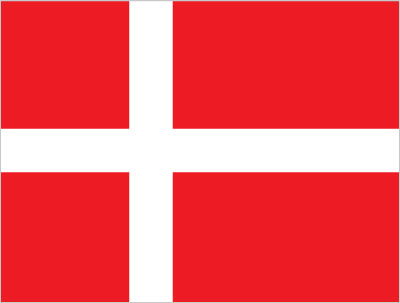Out-of-pocket spending on health as share of final household consumption, 2021: 3.0%
Price levels in the healthcare sector, 2021 (OECD average = 100): 105
Population reporting unmet needs for medical care, by income level, 2021
– Lowest quintile: 2%
– Highest quintile: 0.8%
– Total: 1.2%
Main reason for reporting unmet needs for medical care, 2021
– Waiting list: 0.8%
– Too expensive: 0.3%
– Too far to travel: 0.1%
Population reporting unmet needs for dental care, by income level, 2021
– Lowest quintile: 9.9%
– Highest quintile: 1.3%
– Total: 5.0%
Adults aged 65 and over rating their own health as poor or very poor, by income, 2021
– Lowest quintile: 13%
– Highest quintile: 6%
– Total: 12%
Source: OECD (2023), Health at a Glance 2023: OECD Indicators, OECD Publishing, Paris, doi.org/10.1787/7a7afb35-en.
“Despite relatively low economic inequality and a universal health care system, social inequality in health has increased since the 1980s. In 2016, the average length of life for men in the highest income group was 83.3 years, while it was 73.8 years for men in the lowest income group – a difference of 9.5 years; for women, the difference was 5.5 years (Sundhedsstyrelsen, 2019a).
“A comparative study of refugees in Denmark, Norway and Sweden found that refugee men in Denmark have higher risks for mortality, disability pension, psychiatric care and substance abuse than most native-born Danish men. In addition, these differences are higher than comparable estimates observed between refugee men and native-born men in Norway and Sweden. However, except for increased risk for psychotic disorders, outcomes among refugee women were similar to or better than those of native-born women in all countries (Dunlavy et al., 2023).
“Most risk factors affecting population health status in Denmark are similar to the EU average. However, the impact of tobacco use on cause of death stands out as much higher (Fig. 1.2). In Denmark, every year there are 13,600 more deaths among smokers and former smokers than among never-smokers. In addition, every year, 58,000 years of life are lost in men and 38,000 in women due to smoking. Smoking reduces average life expectancy by 3 years and 6 months in men, and by 3 years and 1 month in women (Eriksen et al., 2016).”
Source: Birk HO, Vrangbæk K, Rudkjøbing A, Krasnik A, Eriksen A, Richardson E, Smith Jervelund S. Denmark: Health system review. Health Systems in Transition, 2024; 26(1): i–152.
“Despite the principle of easy and equal access to health care, persons with only primary-level education experience more illnesses, worse consequences of ill health and die earlier than people with tertiary education (Sundhedsstyrelsen, 2022e). Social inequality is seen in 5-year survival rates among people with ischaemic heart disease and people with cerebrovascular disease; for both men and women, survival rates are higher for people with a higher level of education. The same pattern of social inequality in mortality is seen for patients with COPD and certain cancer patients (breast cancer, lung cancer and bowel cancer), which suggests social inequality in the outcome of treatment efforts (Sundhedsstyrelsen, 2020). Further, a register-based study investigating treatment quality at hospitals and unjustified differences therein showed that between 2007–2016, a significant proportion of patients did not meet all relevant process indicators (measures of the quality of care) for heart failure, stroke and femur fractures: the lowest income patients more often failed to fulfil all relevant process indicators than the highest income patients (Rigsrevisionen, 2019), which suggests social inequality in treatment.
“There are also inequalities in health outcomes between different ethnic groups. The incidence of preterm birth (Pedersen et al., 2012), caesarean section (Rasmussen et al., 2019b) and the severity of low birth weight for gestational age (Pedersen et al., 2012) are much higher for some ethnic minority groups than ethnic Danes. In terms of realized access, children of refugees have lower participation in the childhood vaccination programme and routine child health checks compared with ethnic Danish children (Møller et al., 2016; Møller, Kristiansen & Norredam, 2018). Similar results are also seen among migrants and some descendant groups (Slåttelid Schreiber et al., 2015; Sundhedsstyrelsen, 2016; Hertzum-Larsen et al., 2020). Migrant adults use the health care system differently from the majority population (Hempler, 2010; Nielsen et al., 2012): emergency rooms are used more (Hempler, 2010; Nielsen et al., 2012), while dentists are used less (Nielsen et al., 2012), indicating barriers to accessing primary care and dental services for these groups.”
Source: Birk HO, Vrangbæk K, Rudkjøbing A, Krasnik A, Eriksen A, Richardson E, Smith Jervelund S. Denmark: Health system review. Health Systems in Transition, 2024; 26(1): i–152.

Danish Health System Overview
Health System Rankings
Health System Outcomes
Coverage and Access
Costs for Consumers
Health System Expenditures
Health System Financing
Preventive Healthcare
World Health Systems Facts is a project of the Real Reporting Foundation. We provide reliable statistics and other data from authoritative sources regarding health systems and policies in the US and several other nations.
Page last updated July 25, 2025 by Doug McVay, Editor.
